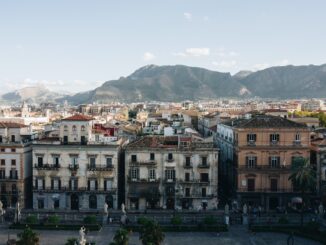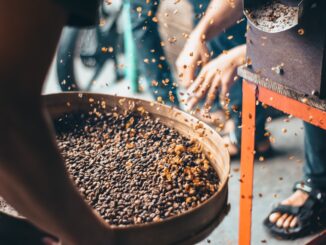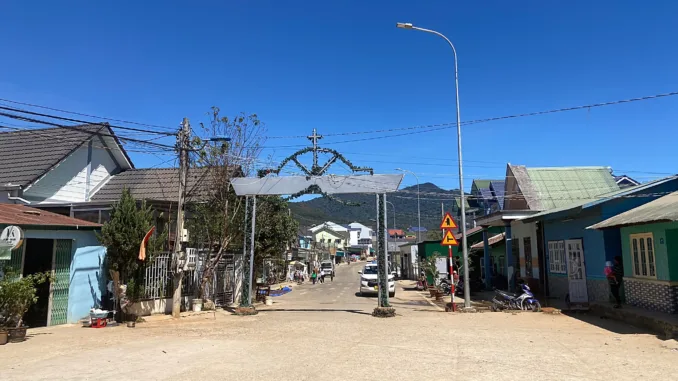
The K’Ho Coffee Farm and Roastery is an arabica coffee farm named after the local tribe that owns and operates it. We chat with co-founders Rolan and Josh about Vietnamese coffee, the tribe’s life, and more.
BY TANYA NANETTI
SENIOR ONLINE CORRESPONDENT
Photos by Tanya Nanetti
During our weeks in Vietnam, we had the opportunity to visit many specialty-coffee shops and roasters throughout the country, trying signature drinks, locally grown robusta, and regional specialties.
But as Vietnam is one of the largest coffee producers in the world, we could not miss the opportunity to visit a coffee farm. So once we reached Dà Lat—the main city in Vietnam’s Central Highlands and the unofficial coffee capital of the country—we arranged to visit K’Ho Coffee Farm and Roastery nearby. This coffee farm is named after the local tribe that owns and operates it, and grows exclusively arabica beans.
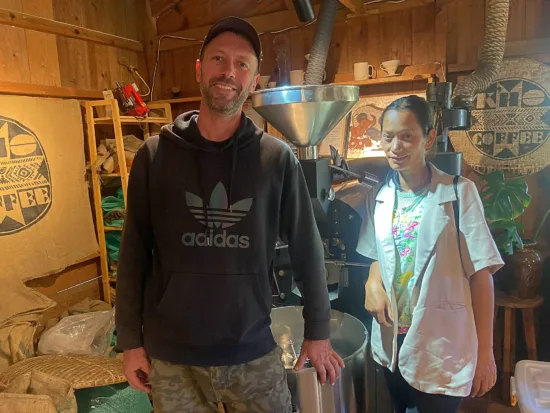
Meet Rolan and Josh
So it was that on a sunny winter morning we took a cab to K’Ho Coffee to meet our hosts for the day, co-founders Rolan Co Lieng and Josh Guikema, partners in business and life.
While Rolan set everything up in the coffee shop for the day’s work, Josh gave us a tour. We started with a look at K’Ho Village, a beautiful area where time seems to have stood still—children still play in the streets and sleeping dogs roam the dusty central street—and everyone appears to know one another.
Then it was time to explore the coffee farm, slowly immersing ourselves in the small greenhouse in the back with the tiny coffee trees, the nearby plantation section and processing area (with raised beds full of beans left to naturally ferment), and, once back at the café, the roasting corner and brewing area.
It was already clear that we were in a special place, a unique coffee shop run by a local tribe offering locally grown, processed, and roasted coffee.
We had the opportunity to sit down over a cup of washed arabica to learn more about the K’Ho coffee farm and the tribe’s life, starting with the basics: trying to better understand the coffee scene in Vietnam.
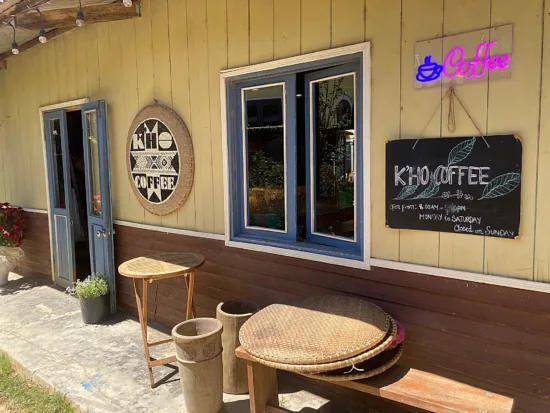
K’Ho Coffee Farm and Roastery’s Roots
“My wife Rolan and I started our roasting business on the farm in 2014,“ Josh said. “She grew up on a coffee farm in a lovely mountain village in the central highlands of Vietnam, while I’m originally from Michigan, USA. We met almost by chance, at a community fire dance in her village, while I was riding my motorcycle across Vietnam.“
Josh explained that discovering coffee through Rolan was an exciting development for him. “After some time, when she first brought me home to meet her parents, they were at work harvesting in their coffee field in the hills, and it was love at first sight for me,“ he said. “I ended up spending the season helping with their family’s coffee harvest, trying different methods of processing arabica cherries, and discovering that the coffee was really good! Soon after, we bought a coffee-roasting machine and started a small business that grew organically.“
But the history of K’Ho coffee has older roots. According to Josh, it was Rolan’s great-grandfather who “planted coffee trees (the oldest on the plantation are of the arabica Bourbon variety) in our village about 100 years ago, with seeds first introduced during Vietnam’s French colonial era, at a time when a cog railway system was being built in the area up the steep terrain, connecting coastal ports to the hill stations on the plateau where we are.“
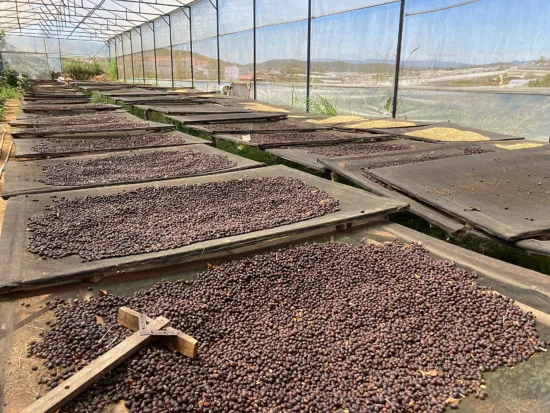
Arabica and robusta in Vietnam
Josh also shared a fact that caught us totally by surprise: Contrary to popular belief, the history of Vietnamese coffee is in many ways more related to arabica than robusta.
“The first coffee planted in Vietnam was arabica, historically distributed in some high-altitude areas, while robusta was introduced to Vietnam more recently and widely planted in the 1980s-1990s and has since become an export giant due to the popularity and convenience of instant and soluble coffees,“ Josh said. “But we at K’Ho Coffee prefer to be tied to our roots, continuing to grow the old heirloom varieties and roast only pure arabica beans.“
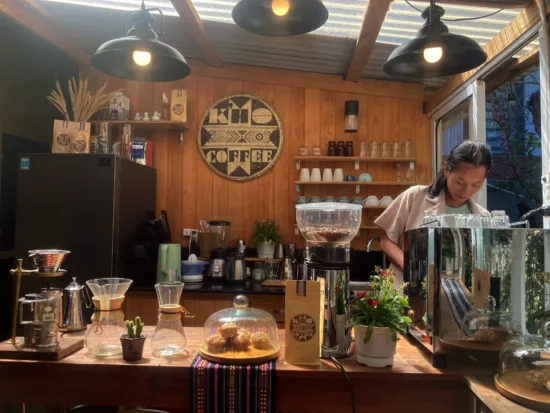
The Coffee Scene in Vietnam
Josh explained that coffee shops are on almost every corner in Vietnam. “You can always find a comfortable space to wait out a monsoon downpour while you’re on your bike,“ he said. “But, as is the case in most coffee-producing countries, it is also easy to find a bad cup of coffee because many dirty beans that are not suitable for export are consumed locally. Traditionally, robusta is brewed in the iconic Vietnamese metal dripper called Phin, and served with sweet condensed milk and ice, in a drink called ca phe sua da. But things are slowly changing, and today many excellent specialty-coffee places are also springing up in Vietnam, where you can get the best cup of single-origin arabica. You just need to know where to look for it.“
Once Rolan joined us with a second brew—a super-sweet honey-processed coffee—we learned about K’Ho Coffee and what happens on the farm during the production year.
“We are a community-based family business. This means that—in addition to the many volunteers and collaborators outside the village to whom we are totally grateful—all of our team members are part of the coffee-farming community with a shared heritage as a traditional artisanal village of the K’Ho Hills tribe,“ Rolan said. “We produce mostly washed arabica (in limited quantities, being totally single-origin), as well as some honey-processed and natural coffees that you can try if you come and visit our farm store.“
And once here, why not spend a day helping the farm as a volunteer? As Josh said, “It is an eye-opening experience, especially for a barista or roaster, to spend a day in the life of a coffee farmer, and will give a new appreciation for the work required to produce a bag of green coffee.“
Going on to talk about the daily tasks required by running a farm and roasting/coffee shop, Rolan explained that “there is a cycle of activities on the farm based on the season. For example, harvest season is the busiest and most exciting time of the year, while in the rainy season we do tree pruning and field care. But there is also a daily routine: On a normal day in the village, we get up early and roast several batches of coffee to be packed and shipped the same day, headed to different coffee shops in Ho Chi Minh and Hanoi, and to many home brewers scattered around the country. When it’s 8 a.m., we open the café and welcome guests for coffee, waiting for visitors to come to our farm to experience a day in the life of a coffee farmer, or just to have a cup of locally grown coffee.“
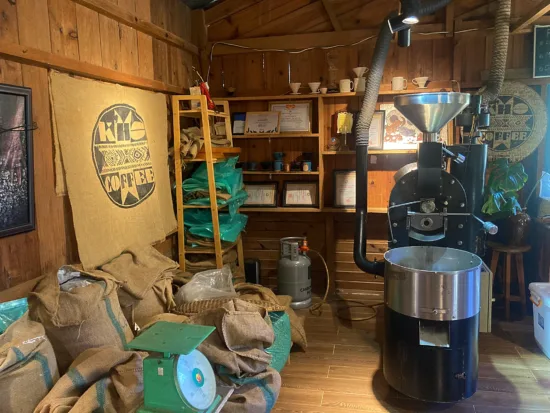
Modern Tribal Life
Rolan told us about the K’Ho tribe and what it means to live in a tribal village in modern-day Vietnam.
“The mountainous highland region of Vietnam’s Lam Dong province is the historical home of the K’Ho tribe, a culturally matriarchal tribe where traditionally after marriage the husband moves to live with his wife’s family,“ Rolan says.
“Our farm and roastery is located in a traditional K’Ho handicraft village, known for producing beautiful handwoven textiles with intricate and colorful designs,” she continued. “Of course in modern life there are many job opportunities outside the village, but many K’Ho still choose to stay with the tribe and work in mountain farming. Most families have a house in the village and a plot of coffee with a small work shed in the mountains. After all, coffee is still an important crop for the community, and families always come together to participate in harvest work.“
Speaking of families, we also learned about the additional members of the couple’s family.
“We have four children and raise (them) on our farm: They have a natural childhood in the village with a strong community among the gardens with many extended relatives and friends nearby,“ Rolan said. “The children attend public school and spend some weekends playing together on the coffee farms while their parents and grandparents work.“
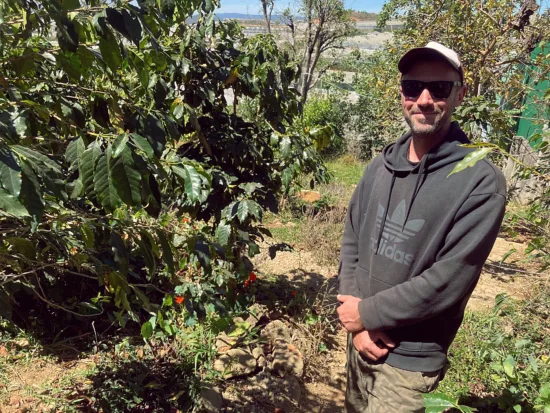
Choosing Community
Before saying goodbye, we asked Josh about his decision to change his life by moving from the United States to a Vietnamese tribe village. Was it easy from day one? Was it worth it?
“My wife’s family and community were very welcoming from the very beginning when I moved with her to the village,“ Josh said. “I am really grateful to live in Vietnam, and I love the people and the landscape. It is nice to see a community and a family living and working together, and I think that is missing in my country.“
Perhaps it was the friendliness of Rolan, Josh, and the other villagers, or the happy faces of the children we saw playing soccer on the dusty road. Or maybe it was the peaceful setting among the lush mountains, or the delicious coffee we just had. Whatever it was, we left K’Ho Coffee with the knowledge that we could not have agreed more with Josh.
ABOUT THE AUTHOR
Tanya Nanetti (she/her) is a specialty-coffee barista, a traveler, and a dreamer. When she’s not behind the coffee machine (or visiting some hidden corner of the world), she’s busy writing for Coffee Insurrection, a website about specialty coffee that she’s creating along with her boyfriend.
Subscribe and More!
Out now: It’s the April + May 2024 issue of Barista Magazine! Read it for free with our digital edition. And for more than three years’ worth of issues, visit our digital edition archives here.
You can order a hard copy of the magazine through our online store here, or start a subscription for one year or two.



